Environmental problems worsen over time to become a real threat that requires the search for effective solutions to reduce them, with energy transformation and transition to green energy and clean energy at the forefront of the list of solutions; For providing energy solutions with zero environmental damage.
In this article, we have gathered the most important information relevant to clean energy. We have illustrated the key role that this energy plays in protecting the environment, which has alerted countries worldwide and the Arab country, and taken concrete steps in this direction, leading to the emergence of many companies that generate sustained profits as demand for this new energy sector grows.
Information about clean energy
What is clean energy?
Clean energy is defined as energy generated from zero renewable sources of chemical emissions, and its use does not cause any form of pollution of the atmosphere, including energy stored according to energy efficiency measures.
Clean, green and renewable energy terms are used as synonyms, although in fact they are different, albeit intersecting some common points. Clean energy is energy from unleashed air pollutants, while green energy is generated from natural sources, and renewable energy comes from unimplemented sources such as wind and sun.
Although most green energy resources are renewable sources, not all renewable sources of energy are green, for example hydropower is renewable, but not green on the grounds that industrial transformation and dam-related deforestation cause environmental harm. In other words, clean energy is produced from a green energy meeting with renewable energy such as solar and wind energy meeting.
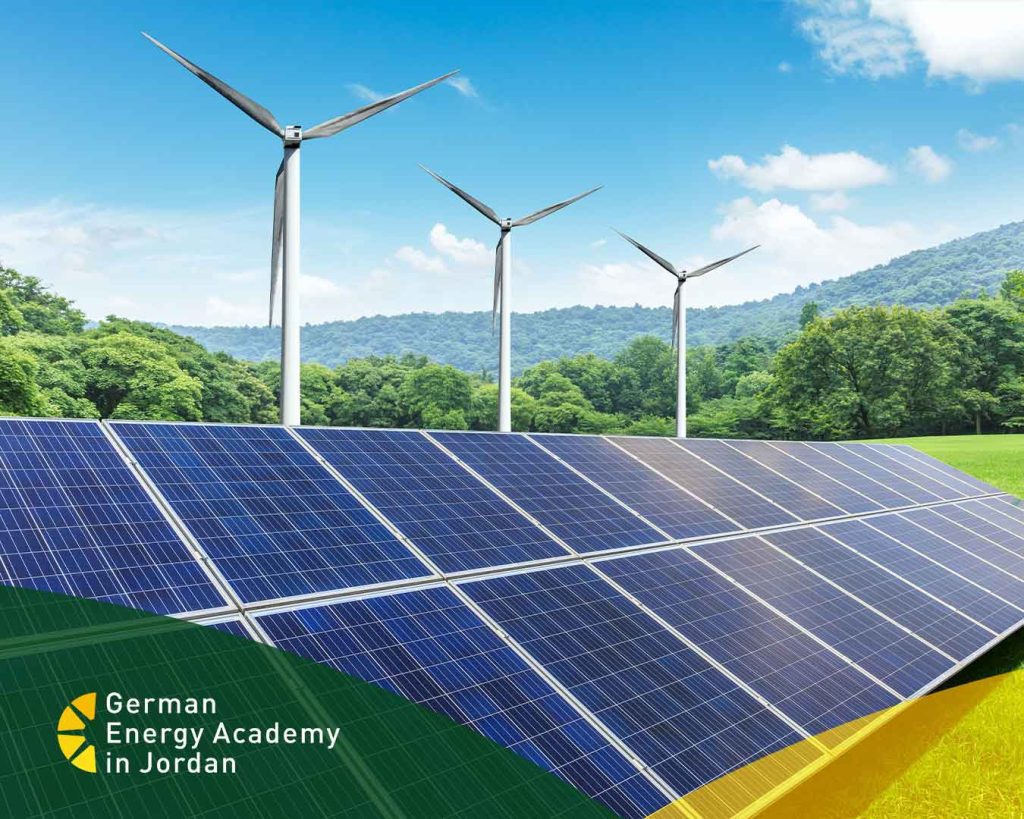
Clean energy and its impact on the environment
Clean energy produces very little greenhouse gas, probably nothing, and includes renewable sources and carbon-free sources. Clean energy means clean air and its environmental impact can be summarized in some of the benefits:
- Reduce global warming.
- Reduce dependence on unclean energy sources.
- Environmental protection and pollution reduction.
- Protect marine life.
What are the sources of clean energy?
Clean energy is the alternative to fossil fuels, defined as energy generated without combustion of petroleum products, or nuclear fission. They come from multiple energy sources, including:
- Wind Power: Turbines are used to generate large amounts of electricity from wind power without producing any contaminants, as electricity is generated when wind blades drive the turbine that operates a generator that produces electricity. Wind turbines contain sensors that determine the speed of the wind, and automatically stop the operation of the turbines if the wind speed is above 55 miles/o so that the blades are not damaged.
- Solar energy: Solar energy harnesses sunlight and heat, transforming it into electricity through, for example, solar panels.
- Hydropower: Hydropower depends on the movement of water for electricity generation, fast-flowing rivers are the optimal option for electricity generation, and until hydropower achieves its purpose, water flow must be controlled.
- Nuclear energy: Nuclear energy is not mentioned when referring to clean energy, although it is the second largest source of low-carbon electricity in the world after hydropower. Nuclear energy is characterized by maintaining air as clean as possible and maintaining its quality. Nuclear power is a clean, zero-emissions energy source.
Energy is generated from fission that divides uranium atoms, and heat from fission is used to create steam that powers turbinart to generate electricity without the need for harmful byproducts of fossil fuels.
Nuclear energy is seen as clean energy because it keeps the air clean by removing thousands of tons of air pollutants each year, which lead to acidic circulation, smoke fog and cause numerous diseases such as lung cancer and heart disease. nuclear power “, nuclear power does not need large areas such as other clean energy sources. For example, a 1000 MW production facility and less than a square mile to operate, it needs solar photovoltaic power plants 75 times larger, and more importantly, nuclear power produces minimal waste that can also be reprocessed and recycled.
- Natural gas energy: Natural gas is a clean energy source, arguing that it offers environmental benefits compared to other fossil fuel sources such as coal, including reducing CO2 emissions by half compared to coal.
Natural gas releases between 45% and 35% of greenhouse gas emissions, which is lower than coal when used for electricity generation, which means air pollution is significantly reduced, and supports renewable energy sources, as it compensates for a shortage of solar or wind power supplies and responds quickly to sudden increases in demand.
Forms and types of clean energy
Clean energy comes in a variety of forms:
- Solar energy is the largest source of clean energy on Earth. The amount of solar energy that reaches the Earth at one hour is sufficient to supply the Earth’s energy needs for decades, if exploited in the same way.
- Wind power causes the power of wind from different temperatures on the Earth’s surface to move the atmosphere. This energy can be used to generate electricity. However, this requires a special infrastructure for this purpose, namely the construction of large wind turbines in open spaces for power generation.
- Geothermal energy: As we deepen into the Earth’s crust, the temperature increases at an average rate of 3 degrees per 100 metres. This large thermal energy can be exploited through the transfer of internal steam to turbines used to produce electricity, as well as the possibility of exploiting water vapour for heating.
- Hydropower is the most common hydropower, and can be obtained from river water stored behind dams, or by exploiting the movement of waves. In both cases, the latent water energy is converted into kinetic energy through turbines intended to generate electricity.
Use of clean renewable energy
Clean energy uses are multiple by source, including:
- Charging batteries.
- Squirt.
- Heating water.
- Solar irrigation.
- Operation of electrical machinery.
- Solar distillation process converts salt water into potable water.
- Grinding grain by converting tidal energy into mechanical energy using grain grinding turbines.
Pros and cons of clean energy
Clean Energy Pros
- Clean energy technologies are a clean source of energy, as they do not produce any greenhouse gases that increase global warming.
- Jobs are created through their impact on States’ job development and economy.
- The use of clean energy technologies contributes to stabilizing alternative energy prices.
- The use of clean energy technologies contributes to stabilizing alternative energy prices.
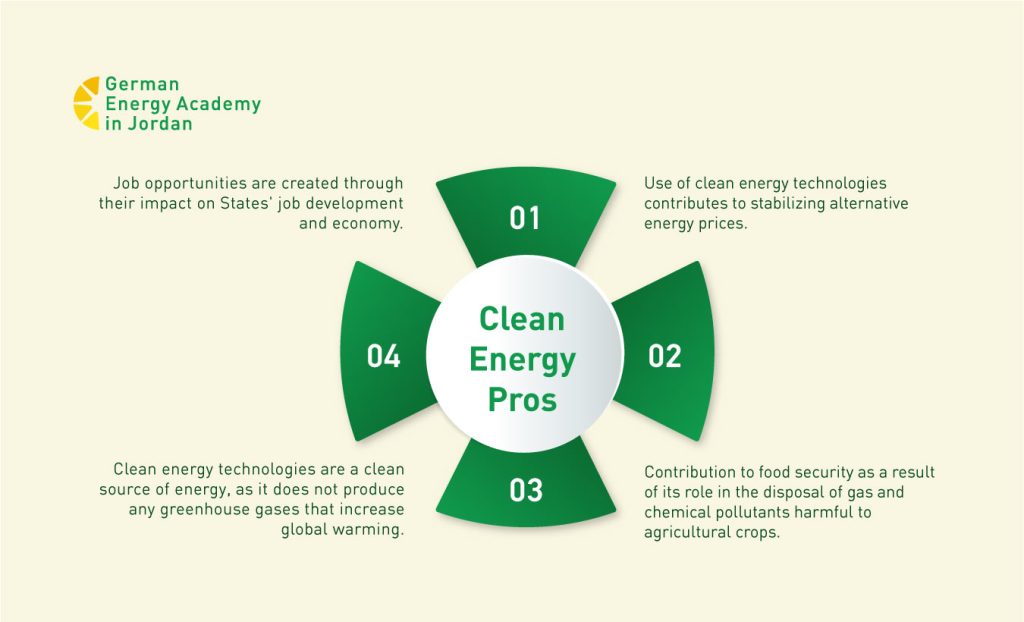

Clean Energy Cons
- The full reliance on clean energy sources for electricity generation is difficult compared to normal methods due to the new trend in this direction.
- Clean energy is unreliable because electricity generation through its technologies is not stable because it depends on weather conditions and is linked to the availability of adequate climatic conditions.
- Large areas require installation and processing of infrastructure.
- Clean energy technologies are considered to have a high initial cost in terms of plant construction and installation, in addition to the resulting energy storage costs that require high-price batteries.
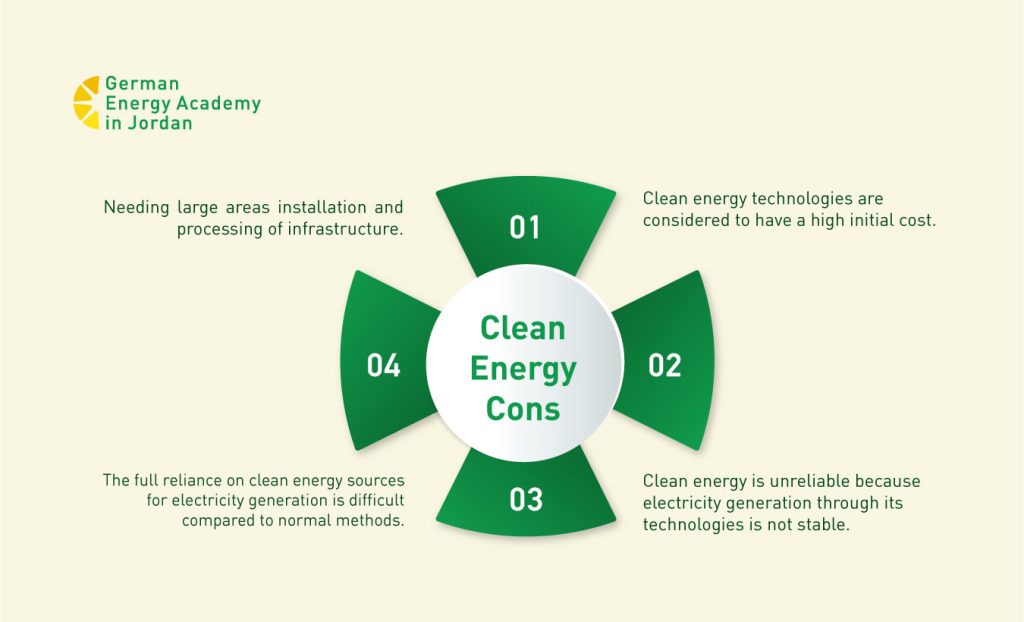

Top 10 Global Clean Energy Revenue Companies
With the growing energy orientation, renewable and clean energies are on the rise, the revenue and profits of companies specializing in this field, led by the following companies, are increasing:
- Pacific Ethanol
An American company specializing in the production and sale of renewable fuels, its new name is Alto Ingredients.
- Motech
Based in Taiwan City, the company is the world’s largest solar power producer.
- Hanergy Thin Film Power Group
Solar power is produced by thin membrane cell technology, based in Greece.
- Electro Bras
It is the world’s fourth largest renewable energy company, a Brazilian company based in Rio de Janeiro, specializing in photovoltaic power production.
- Group Energies AG
It is a company specializing in the production of ethanol using wheat, wheat and barley.
- Vestas Wind Systems
Danish company specializing in manufacturing Denmark-based wind turbines.
- Canadian Solar
A Canadian company specializing in solar energy production with revenues of up to $3.74 billion, it is one of the world’s three largest solar energy companies.
- First Solar
It is located in the American city of Arizona with investments exceeding $1 billion.
- Lungi Green Energy China
The world’s largest solar energy company by market value is 82 billion.
- Suzlon
Indian company; The world’s fifth largest company in terms of wind power production, is the most profitable company in the industry.
- Siemens
The German multinational has a capacity of 240.9 MW of renewable energy and is one of the largest producers of energy-saving technologies and the first to build offshore wind turbines.
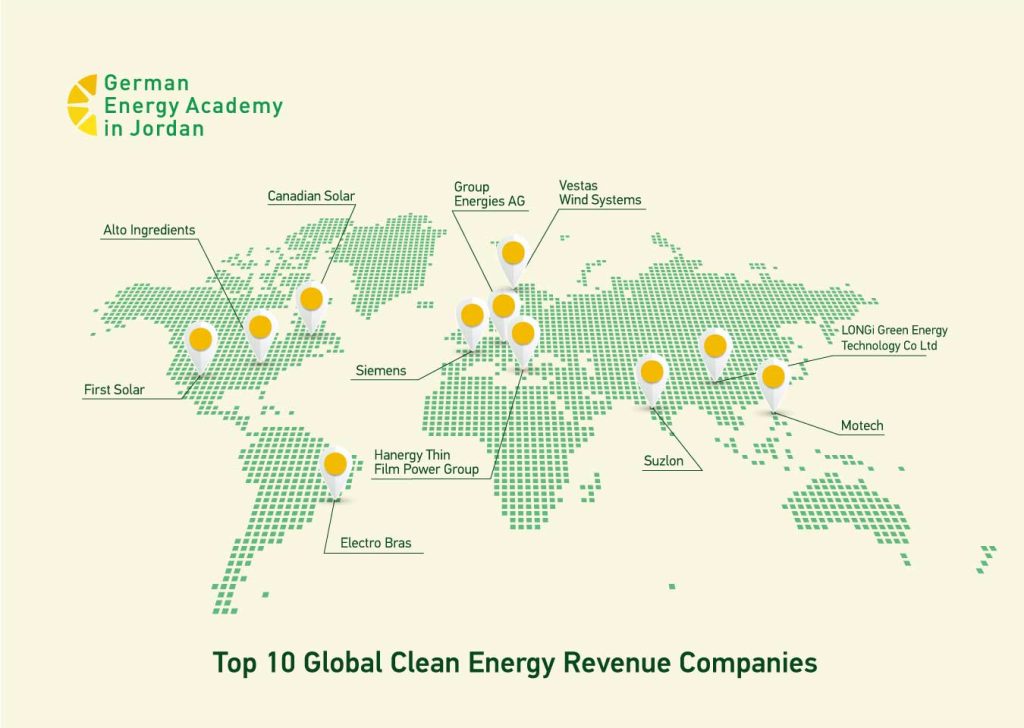

Countries benefiting from clean energy
Start to invest in unimplemented renewables, with the aim of reducing environmentally damaging carbon emissions as an alternative to many countries of the world, topped by:
Norway: Norway has the largest share of renewable roads globally, especially for hydropower, which is the world’s largest at 45% of its energy supply, in addition to wind and biomass, all of which provide the equivalent of 97% of the total energy needed by Norway.
Germany: Germany exploits solar power in electricity generation, ranked first in renewable energy, and after nuclear power plants were its primary pillar in electricity generation, they were replaced by solar, wind and biomass power, which now generates 20% of the country’s electricity.
Sweden: By virtue of its geographical nature with extended beaches and rich in water sources, Sweden has been able to generate power from the movement of waves. 50% of Sweden’s total energy use is due to renewable energy
Iceland: Iceland provides 100% of its renewable energy electricity needs, particularly geothermal energy invested in heating, and industrial lighting and electricity are due to hydropower.
Brazil: Brazil is first in the field of biofuels and waste energy that provide 32% of the energy supply, and ethanol fuel & nbsp; Sugar cane product Brazil prepares its first product.
Clean energy in the Arab world
The Arab world’s investments from renewables and green hydrogen are expected to reach $1 trillion, equivalent to € 885 billion by 2040, and several Arab countries, including Jordan, have taken concrete steps to reach carbon neutrality by 2050
Many Arab countries encouraged their language of clean energy sources to implement renewable energy projects and compete among themselves in terms of investment in this area; With a view to transforming the green economy, four Arab countries are at the forefront in terms of developing ambitious policies and plans to develop and implement massive clean energy generation projects:
Egypt: In its 2035 plans, Egypt targets renewable energy as 42% of the national electricity grid’s total capacity.
UAE: The UAE’s renewable energy generation capacity during 2020 reached over 32%.
Saudi Arabia: Saudi Arabia is increasing the actual generation capacity of renewables to 58.7 GW by 2030, and the Kingdom’s most prominent projects in this field of solar energy
Morocco: Morocco’s total renewable energy capacity of 4 thousand megawatts is equivalent to 37% of the country’s electricity capacity.
Clean energy in Jordan
According to the Arab Renewable Energy Authority, renewable energy meets more than 20% of Jordan’s energy needs, making it one of the leading Arab countries in energy transformation due to its geographical location.
In the same vein, the Kingdom’s clean energy sector is very active in attracting global companies to invest in projects within its territory, with the Kingdom ranked second in the Arab region in terms of creating an enabling environment for renewable energy investment and energy efficiency
FAQs on clean energy:
Why is renewable energy called clean energy?
Renewable energy means each renewable source on its own, such as wind, sun or water, and these sources are often considered clean energy; Because it is so environmentally friendly that it does not cause any air or water pollution.
In other words, renewable energy is a form of clean energy, for example sun and wind energy & nbsp; They are renewable energies, because & nbsp; from renewable energies & nbsp; themselves automatically, and clean energies because they do not cause any pollution in the atmosphere or the environment.
Why is clean energy called green energy?
Both clean and green energy aims to reduce pollution, which makes a lot of clean energy a green energy. Clean energy is energy generation that does not produce greenhouse gas emissions, in return green energy is energy generation from unlimited sources that do not produce carbon emissions or negatively affect the environment.
Nevertheless it is necessary to take into account their impact on the environment clean and non-green energy means greenhouse gas emissions or any form of pollution. but the source is non-renewable or has negative effects on the environment, Clean and green energy in power generation does not produce any greenhouse gases or damage to the environment and the source is renewable But we can’t find green energy that’s not peerless energy
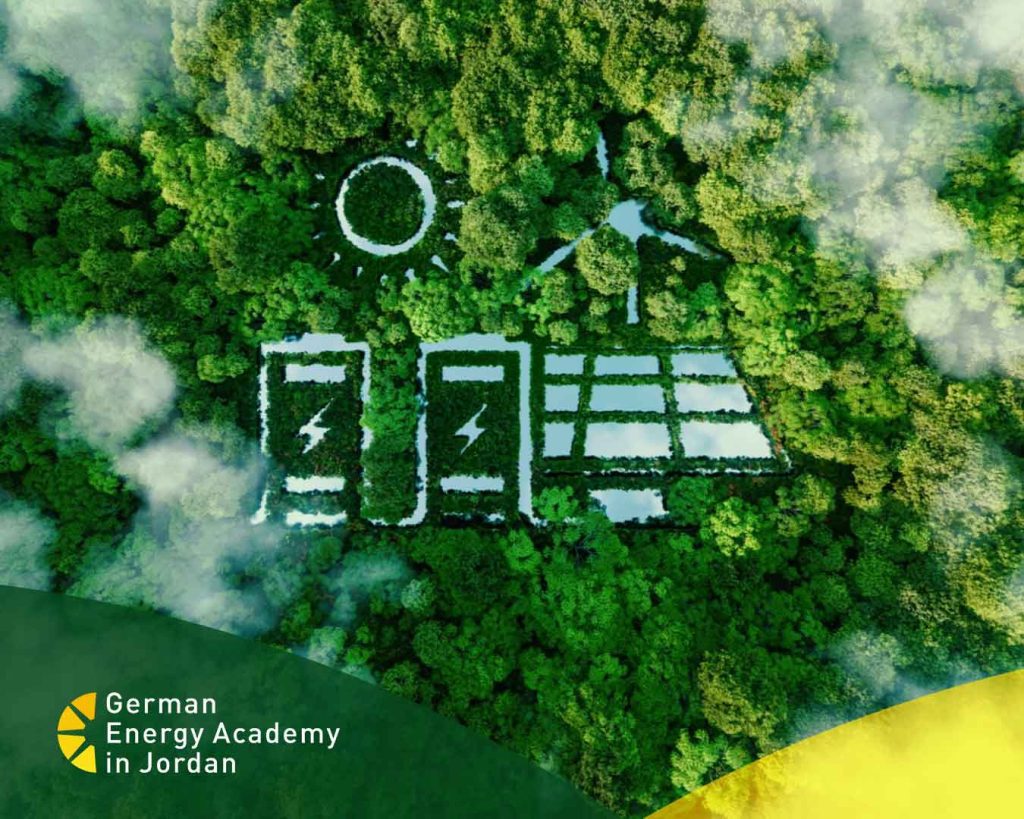

Why is natural gas called clean energy?
Fossil fuels are known to be environmentally unfriendly in the long term, but not all types are enemies of the environment. Natural gas is one of them and cleaner at the same time, but it is not a renewable energy source, because gas cannot be renewable.
Natural gas is formed as a result of the accumulation of plant and animal remains on the Earth’s surface and ocean floors submerged under sand and rock for millions of years, then transformed into natural gas as a result of heat, pressure and time.


Natural gas remains a fossil fuel, but compared to coal, petroleum and other fossil fuels, it produces polluting emissions of air and carbon dioxide. Less with the production of the same amount of energy compared to other fossil fuels.
On the other hand, natural gas is not a fully clean energy, Its main component is methane, a trove of gas that contributes only 3% of all greenhouse gas emissions in the United States. Operations related to natural gas sources such as drilling are also problematic for the environment Well drilling leads to air pollution and environmental disturbances, and natural gas production may cause water pollution.
In addition, transport and distribution processes may be difficult to achieve, necessitating natural gas burning at the well site causing the production of CO2 and other compounds that are greenhouse gases but. Not with a degree of methane, which makes it better to burn than to release it into the air.
Can clean energy be found at affordable prices?
Research published in 2012 shows that clean energy technologies have never only become cheaper before Many have become cost competitors with fossil fuel technologies that many countries are seeking to replace. Getting power from new wind turbines and solar panels is now cheaper than getting power from existing coal and gas plants and energy storage that will play an important role in enabling the future of renewable energy cheaper by the day, The good news is that affordable clean energy technologies can be leveraged by doubling down on many policies targeting energy transformation.
Between 1990 and 2010, the number of people with access to electricity worldwide increased by 1.7 billion. This number is expected to increase, which means an increase in the demand for electricity. Therefore, the trend towards clean energy has become both an effective solution and an urgent need. Efforts have resulted in the generation of more than 20% of the world’s energy from renewable sources from 2015.
Because the Arab region has a large reserve of clean energy sources, As the demand for electricity grew, efforts began to turn to electricity generation, With a view to providing the largest number of people with electricity, access to electricity for the largest and most affordable by 2030 requires increased investment in clean energy sources such as solar and wind, Adoption of cost-effective standards for the application of a broad spectrum of technologies This would reduce the global electricity consumption in buildings and in industry by 14% by approximately 1,300 medium-sized generating plants. It also expanded infrastructure and upgraded technology to provide clean energy.
In conclusion, States are endeavouring to promote the energy field, particularly clean energy, which is considered to be environmentally friendly with excellence; With a view to securing their energy needs, it is necessary to pay attention to the simple differences between the concepts of renewable green and clean energy, although they all have the same goal. What practical steps has your country taken in this area?
